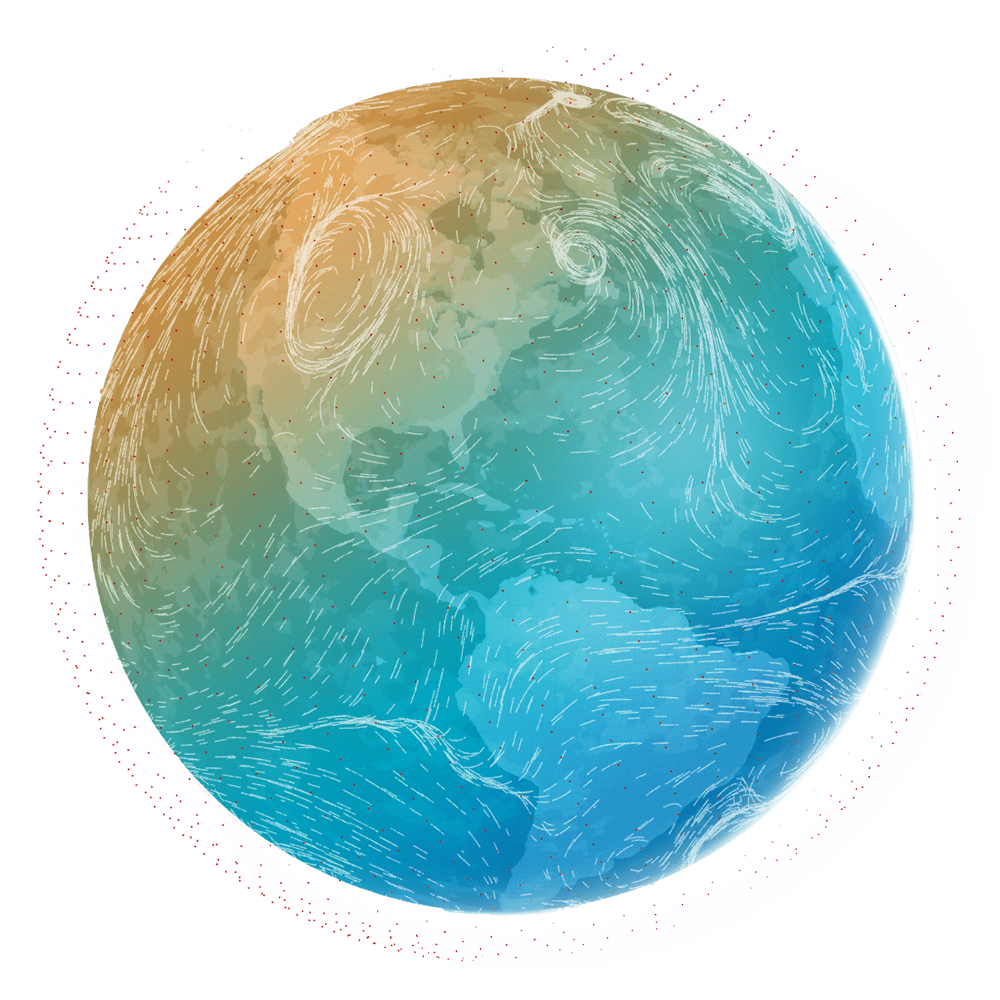RF-Based Earth Intelligence
Advanced Earth Intelligence for your applications
The reach and unique data collected by our satellites has a diverse range of applications from meteorology and weather forecasting, scientific investigation into oceanography and other scientific studies, tracking global challenges related to population growth, resource management or climate change.

Weather Forecasting
Weather forecasting impact with radio occultation
GNSS Radio Occultation (RO) profiles are a key input to all-weather forecasting systems, providing significant improvement to long-term forecast accuracy. Using a proprietary GNSS payload called STRATOS, Spire miniaturized and commercialized the technique, becoming the world’s first commercial producer of RO measurements. Today, Spire is the world’s largest producer of RO data.
An independent assessment of Spire RO from NASA concluded it is “of quality consistent with the other GNSS-RO observing systems […] in terms of their weather forecast impact, and the spatial distribution was complementary in filling data void regions. Vertical information content was suitable for studying the fine structures and seasonal variabilities of the tropopause, and their penetration depth was very good and may be useful in the study of the planetary boundary layer.”
Ocean & Climate
Rapid development of ocean monitoring using spire SDRS
Spire adapted its existing radio occultation instruments in space to perform the first dual-frequency, grazing angle GNSS-R altimetry measurements of the ocean. NASA performed an independent evaluation of the Spire data and found that “The GNSS reflected measurements show promise to measure sea surface height with a precision of 2.5 cm over 1 sec averages and an accuracy of < 10 cm.”
In collaboration with NOAA, Spire is now working on a follow-on project to produce the ocean altimetry measurements and use it to monitor coastal sea levels and the extent of sea ice in polar regions.
Space-situational awareness
Increasing space-situational awareness with Spire pod data
NASA found that Spire POD data was “useful in retrieving thermosphere density via satellite drag – particularly in quantifying day-to-day variability.” With improved thermosphere modeling, operators and governments can more effectively predict the paths of spacecraft in low-Earth orbit and improve operator safety.
Autonomous vehicles
Enhanced GNSS integrity with ionospheric monitoring
Businesses and individuals are increasingly reliant on GNSS technologies for daily life and operational success across a wide range of industries, in particular for autonomous vehicles. However, GNSS technology can be disrupted by the ionosphere, and existing terrestrial and satellite systems are not able to provide global monitoring on the time-scales of the disturbances.
By monitoring and correcting these disturbances, autonomous vehicles can work more safely and with higher availability. In collaboration with the European Space Agency, Spire is developing a real-time ionospheric mapping system using Spire ionospheric data.
Flexible plans to suit your need
Get data samples for free, so you can see what the data looks like. If you’d like to see more, we can work with you to determine suitable pricing based on what data type(s), volumes, latency, and usage rights you need for your application.
Data sample
- Up to one week of data, from one or more satellites
- Radio Occultation Profiles
- Total Electron Content files
- POD files
- Magnetometer data
API access
- Access data types of your choice from the existing Spire API
- Data from the full observing fleet
- Flexible pricing based on data type, volume, latency, and usage rights
- Custom APIs / interfaces available
Scientific & research use
Spire has pre-established funding vehicles with public agencies, for researchers and scientists to access our data under scientific and research licence.
Access our Earth Intelligence Data for your scientific use here